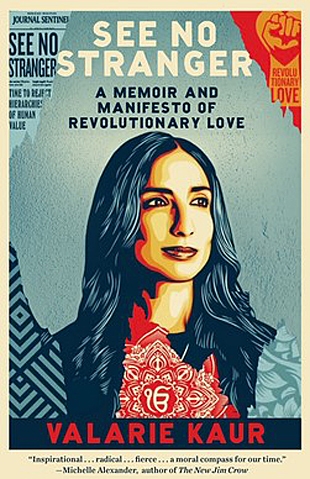“Neurobiologists call oxytocin the love hormone: The more oxytocin in the body, the more care and nurturing mammals show for their babies. Oxytocin decreases aggression in a mother’s body overall with one exception — in defense of her young. When babies are threatened, oxytocin actually increases aggression. For mothers, rage is part of love: It is the biological force that protects that which is loved.
“When I learned this, I thought of my mother and the ferocity in her eyes when she had fought for me. I did not know that she had that kind of rage roaring inside her. She couldn’t access it for herself. But she could access it for me. Now I was learning how to access it for myself.
“My rage showed me that I was worth protecting, that the gashes in my wrist and the burning in my thighs did not have to end my life in order to merit outrage, that racism and sexism were not abstract oppressions but flesh-and-blood violations that lived in the body, and that the body had to find a way to unleash all of its mighty ferocity to protect itself in order to know itself to be alive. The tiger had always been with me, inside me; I just had to find a way to release it and ride it. And where did it deliver me? To a place where my assailants no longer had psychological power over me, because I had reclaimed the sovereignty of my body.
“I thought of all of us who have been trained to suppress our rage — women, especially women of color. Rage is a healthy, normal, and necessary response to trauma. It is a rightful response to the social traumas of patriarchy, white supremacy, misogyny, homophobia, transphobia, and poverty. But we live in a culture that punishes us when we show our teeth — we are called hysterical when we raise our voice; we are less likely to be believed when we tell our story with fury; and, if we are anything other than deferential with an officer, we might get hurt or shot, and even then, our deference might not make a difference. Black and brown people have been schooled in the suppression of our emotions as a matter of survival. ‘We learned when we were very little that black people could die from feeling rage and expressing it to the wrong white folks,’ says bell hooks. ‘We learned to choke down our rage.’ We now have the data to prove what community healers know well: Repressing anger comes at a cost to our health. It results in high rates of autoimmune diseases. It amplifies our perception of physical pain.
“The opposite of repression is also dangerous. Too many men have been socialized to unleash rage without apology. For men, rage is often a secondary emotion that masks sadness or shame. Violence is the socially conditioned default for male rage, and the proliferation of guns has made male aggression deadlier than ever: Mass shooters are typically men, and the majority of these men have physically abused the women in their lives. We might think that the solution is teaching our boys not to show aggression. But suppressed anger always find a way to explode. For women and girls, it is more likely to explode internally as self-hatred or stress or illness. For men and boys, it is more likely to erupt as violence against others.
“The solution is not to suppress our rage or let it explode, but to process our rage in safe containers — emotional spaces safe enough to express our body’s impulses without shame and without harming ourselves or others…. Only when we give rage an external expression outside our bodies can we be in relationship with it. We can then ask: What information does my rage carry? What is it telling me? How do I want to harness this energy?”
